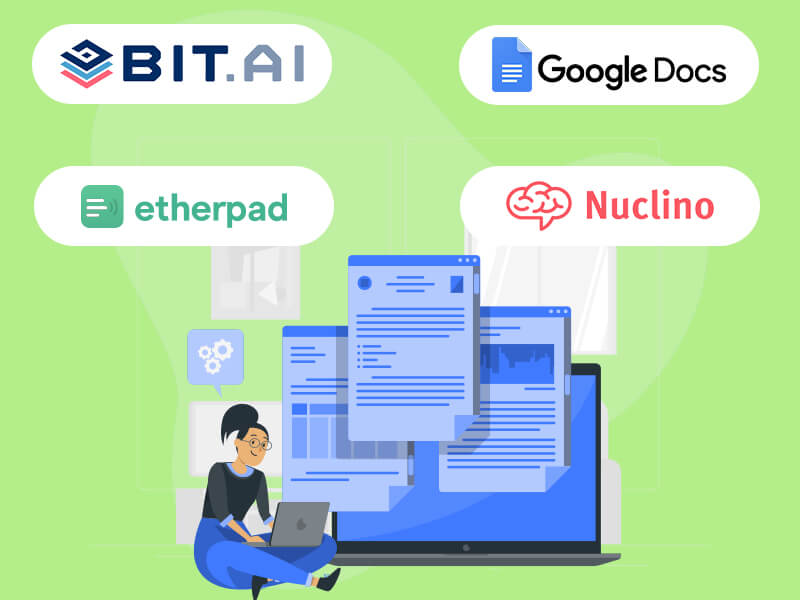Best document management software for remote teams: A Comprehensive Guide
In the realm of remote work, effective document management software plays a crucial role in ensuring seamless collaboration and streamlined workflows. Let's delve into the realm of the best document management software for remote teams, exploring key features, benefits, and implementation strategies that can elevate your team's productivity to new heights.
As we navigate through the landscape of document management solutions, we'll uncover the tools and techniques that empower remote teams to thrive in a digital work environment.
Overview of Document Management Software

Document management software is a digital solution that helps remote teams organize, store, and collaborate on documents and files efficiently. It plays a crucial role in ensuring that team members can access, share, and work on documents seamlessly, regardless of their physical location.
Importance of Document Management Software for Remote Teams
Document management software is essential for remote teams as it centralizes all documents in one accessible location, eliminating the need for constant email exchanges or file sharing. This leads to improved productivity, streamlined workflows, and enhanced collaboration among team members.
Key Features to Look for in Document Management Software for Remote Teams
- Cloud-Based Storage: Allows for easy access to documents from anywhere with an internet connection.
- Version Control: Ensures that team members are working on the most up-to-date version of a document.
- Collaboration Tools: Enables real-time editing, commenting, and feedback sharing among team members.
- Security Measures: Provides encryption, access controls, and data backup to protect sensitive information.
- Search Functionality: Facilitates quick and efficient document retrieval through searches.
Top Document Management Software for Remote Teams

In today's digital age, remote teams require efficient document management software to collaborate effectively. Let's explore some of the top options available in the market and compare their key features, pricing plans, and scalability for different team sizes.
1. Google Workspace
Google Workspace, formerly known as G Suite, is a popular choice for remote teams due to its seamless integration with Google Drive, Docs, Sheets, and Slides. Key features include real-time collaboration, version history tracking, and secure file sharing. Pricing plans are based on the number of users and storage space, making it scalable for teams of all sizes.
2. Microsoft SharePoint
Microsoft SharePoint offers a comprehensive document management solution with features such as document libraries, team sites, and workflow automation. It integrates well with Microsoft Office apps and provides advanced security controls. Pricing plans vary based on the deployment option (cloud or on-premises) and the number of users, making it suitable for medium to large remote teams.
3. Dropbox Business
Dropbox Business is known for its user-friendly interface and robust file syncing capabilities. It offers features like file recovery, granular permissions, and offline access. Pricing plans are based on the number of users and storage space, with options for advanced collaboration tools.
It is suitable for small to medium remote teams looking for a simple yet powerful document management solution.
4. Box
Box is a cloud-based document management platform that focuses on secure file sharing and collaboration. It offers features like custom metadata, automated workflows, and compliance controls. Pricing plans are based on the number of users and advanced features required, making it scalable for enterprise-level remote teams.
5. Zoho WorkDrive
Zoho WorkDrive is a comprehensive document management software that includes features like team folders, document versioning, and task management. It integrates with other Zoho apps and provides end-to-end encryption for data security. Pricing plans are based on the number of users and storage space, with options for additional features like online editing and advanced analytics.These are just a few of the top document management software options available for remote teams.
Each software has its own strengths and pricing structures, so it's essential to evaluate your team's specific needs before making a decision. Choose a software that aligns with your team's collaboration requirements, security standards, and budget constraints for optimal remote work productivity.
Benefits of Using Document Management Software for Remote Teams

Document management software plays a crucial role in enhancing the productivity and efficiency of remote teams by providing a centralized platform for storing, organizing, and sharing documents. Let's delve into the key benefits:
Improved Collaboration and Productivity
- Facilitates real-time collaboration: Document management software enables remote team members to work on the same document simultaneously, fostering teamwork and improving productivity.
- Streamlines communication: With features like comments, annotations, and version control, team members can easily provide feedback and make edits, reducing miscommunication and delays.
- Access to documents anytime, anywhere: Remote teams can securely access important files and information from any location, ensuring seamless workflow and decision-making.
Enhanced Security Features
- Encryption and data protection: Document management software often comes equipped with encryption protocols and secure storage options to safeguard confidential data from unauthorized access.
- Role-based access control: Admins can define user roles and permissions, restricting access to sensitive documents based on the team member's role within the organization.
- Backup and recovery options: Automatic backup and recovery features ensure that critical documents are not lost due to unforeseen circumstances or technical issues.
Successful Remote Teams Utilizing Document Management Software
One example of a successful remote team utilizing document management software is Zapier, a company that specializes in automation tools. By leveraging document management software, Zapier's remote workforce can collaborate efficiently, access important resources, and maintain a high level of productivity across different time zones.
Implementation and Integration of Document Management Software
Implementing document management software within a remote team can greatly enhance collaboration and productivity. Here are the steps to successfully implement and integrate document management software:
Steps to Implement Document Management Software
- Assess your team's needs: Understand the specific requirements of your remote team to choose the right document management software that fits your workflow.
- Select the right software: Research and choose a reliable document management software that offers features like cloud storage, version control, and user permissions.
- Customize the software: Set up folders, access levels, and user permissions according to your team's requirements to ensure smooth operation.
- Train your team: Provide comprehensive training sessions to familiarize team members with the software's features and functionalities.
- Monitor and optimize: Regularly check in with your team to gather feedback and make necessary adjustments to optimize the software usage.
Integration Capabilities of Document Management Software
- Integration with communication tools: Document management software can be integrated with communication tools like Slack or Microsoft Teams for seamless collaboration.
- Integration with project management tools: Connect document management software with project management tools such as Trello or Asana to streamline project workflows.
- Integration with CRM systems: Integrate document management software with CRM systems like Salesforce to ensure all customer-related documents are easily accessible.
Tips for Training Team Members
- Provide hands-on training: Offer interactive training sessions where team members can practice using the software in real-time.
- Create user guides: Develop user guides or tutorials to help team members navigate the software independently.
- Encourage feedback: Encourage team members to provide feedback on their experience using the software and address any issues promptly.
Closing Notes
From enhancing collaboration to safeguarding sensitive data, the best document management software for remote teams offers a myriad of benefits that can revolutionize the way your team operates. By harnessing the power of these innovative tools, remote teams can transcend geographical boundaries and achieve unparalleled success in their endeavors.